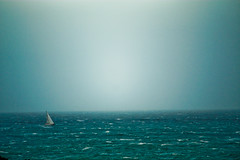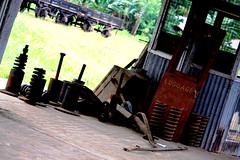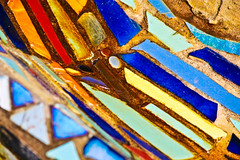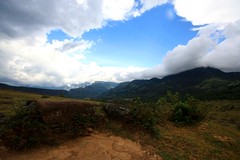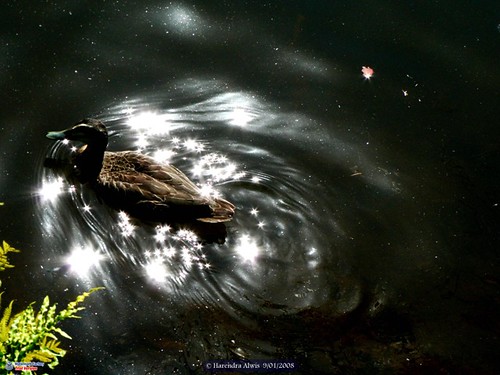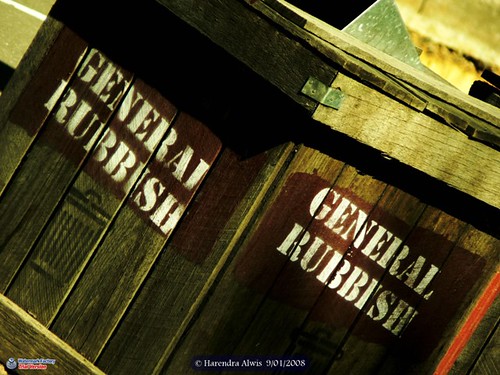Workbench (c) Harendra Alwis
Isolated by International and local travel bans because of a civil war raging within its jungles, the northern region of Sri Lanka offers contrasting views of life and adventure to those who dare cross the Forward Defence Lines (FDLs). This week, Harendra reports from behind enemy lines, about the lives of those who have been caught in the crossfire - both literally and metaphorically - for many years.
To say that ‘Sri Lanka is a land of contrasts’ would be an understatement that could get you thrashed in a night-club or run over by a three-wheeler. From the shacks of tea estate workers in its cool hills, to the luxury condominiums in the capitol Colombo, it is a country that shouts out myriad life stories, but perhaps none so forcefully as the stories of those who live in or near the war zone in the North and East of the country. Their stories are more elusive, so I went searching for them.
Starting off on my trail, I met Kandasamy (36) a local farmer and his family of five who welcomed me to their ‘earthy’ villa. The courtyard is lined by a rock garden on the furthest edge of their one hundred acre estate which coincidentally is also a minefield. Only last night, they were trapped in the middle of an exchange of heavy artillery fire, followed by Ariel bombardment. Despite the sleepless night, Kandasami and his family wake up early morning to start another peaceful day in the village of Kodikulluppu, just 236 kilometres north of the capitol Colombo. Kandasami’s family had spent the night underground in a bunker that they dug themselves. Despite the smoky morning sky and smell gunpowder in the air, Kandasami - a wine enthusiast - is optimistic about the future.
When the war is over, he plans to have his own vineyard and winery on his mine-infested land and of course, turn his underground bunker into a cellar. “I think Sauvignon Blanc will do exceptionally well on this land. The soil and weather is just ideal” he says with a sparkling smile that is iconic of the people of this tiny island off the southern tip of India. De-mining his fields however, could take many years even after the end of the war but that’s not going to be a problem for Kandasami. “I think the mines on the field will add an ‘explosive’ undertone to the taste of my wines, which will compliment the melon taste of Sauvignon Blanc, so I will not have to blend in any Semillions” grins the future entrepreneur.
As I make my way on cratered a landscape I am greeted by Periadorai who has just opened a coffee shop beside the esplanade. Its large French windows offer stunning views across the large man-made tank and what little remains of the main highway. Periadorai’s coffee shop is a popular hang-out for the social elite of Kodikulluppu, including the teenage boys and girls of the only International School in the area, who invade the place soon after school hours. Periadorai, who has received his barista training while living in exile in South India, offers me his speciality – a sublime Macchiato and a delightful bacon and egg sandwich, toasted, with Swiss cheese on freshly backed Italian Herb bread. It leaves me wondering at the end, how good his lemon cheesecake or cinnamon doughnut would have been if only I have been there for afternoon tee under a sky lit up with artilary and anti-aircraft fire.
If business is the lifeblood of Kodikulluppu, then art would surely be its heart. My next stop is at the house of a young and promising painter. Sivagi, a child prodigy who began drawing on the dusty floor when she could barely crawl, had already sold her first crayon painting at the age of 6. Even though her first buyer was her uncle who bought his portrait for a mere Rs. 5, she (was) literally ‘shot’ to fame when she lost her arms to an unexploded shell. She miraculously survived and so did her love of art. Now she draws with a paint brush held between her toes and has since inspired hundreds, if not thousands of children like her, who has also lost their limbs as a result of the war.
Despite the occasional – albeit rare – claymore mine explosion and slightly more frequent kidnappings and just above average murder-rate, the northern and eastern regions of Sri Lanka are a tourist paradise waiting to be discovered. It is a must see destination for every traveller, as any would soon find that the flat arid space and wide cloudless horizons that cradle the stars at night, the white sandy beaches that stretch for miles and the tall palms are only a fraction as delightful or fascinating as the people who live there and their warm embracing smiles.
(Published in The Sunday Times - Mirror Magazine (25/11/2007)
